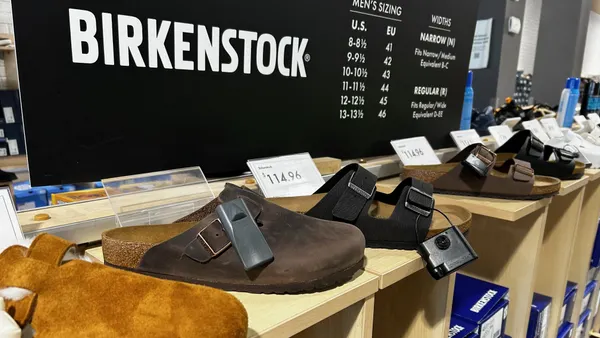Dive Brief:
-
Ralph Lauren on Tuesday said it will simplify its organization and cut its global workforce by the end of its current fiscal year, to achieve savings of between $180 million and $200 million in gross annualized pre-tax expenses.
-
This will be a workforce reduction of about 15%, a spokesperson said in an email. The company had about 24,900 employees as of March 28, and some 13,800 in the U.S., according to its most recent annual report. While physical footprint is always under review, Tuesday's announcement doesn't involve store closures, the spokesperson said.
-
The plan will incur pre-tax charges of about $120 million to $160 million and entails consolidation of global marketing and branding functions; a new consumer intelligence and experience organization to leverage consumer insights and predictive analytics; and re-organizing corporate merchandising teams, according to a company press release.
Dive Insight:
Tuesday's announcement is a refinement of a previously released plan, following second quarter results where digital sales helped temper a 66% revenue decline, and a swing to a $128 million loss, due to pandemic-related store closures.
But Ralph Lauren has been busy for a few years now executing a turnaround strategy, although that has been derailed a few times. First, the chief executive position that Ralph Lauren himself vacated turned over a couple of times before longtime Procter & Gamble executive Patrice Louvet's arrival three years ago. Now a pandemic has interrupted plans.
"In the cold hard light of day, in the throes of the pandemic when demand is muted and on the heels of the department store business declining, this may not be too little too late, but it's a long time in coming," Mark Cohen, director of retail studies at Columbia University's Graduate School of Business, said by phone. "And it's not his fault. Unlike other companies that we see in bankruptcy, Ralph has been right-sizing and reining in superfluous activity, but now it's imperative. Whether or not 15% is enough, well, nobody knows how long Covid is going to be here."
Right now any company in this position should decide the most likely time that demand might return to something like normal, take the steps to survive until then and be ready when it does arrive, according to Cohen. For a designer apparel company like Ralph Lauren, it could be as far away as late 2022 or some time in 2023, but mid-2021 "at the earliest," he said.
The retailer's pivot to become more sophisticated in digital, "by embracing new technologies and enhancing its digital strategies," is good preparation for that, according to Thomai Serdari, professor at New York University's Stern School of Business.
"I think it is correct to set the foundations now for an organization that truly belongs to the 21st century and I would hope that the next phase of this restructuring would be a reexamination of the brand's DNA and the type of merchandise it produces," she said by email. "The brand is well aware of the new consumers and their tastes and therefore the next strategic initiative for RL to survive will be to design for newly found aspirations among younger consumers and a new status quo in general."
Cohen agrees that Ralph Lauren needs more than fiscal and operational attention.
"Ralph created a lifestyle brand which is kind of the archetype of a lifestyle brand," he said. "He has always been both brilliantly creative and ridiculously indulgent. There has been an underlying issue of whether Ralph can transition to a more contemporary view of himself."














